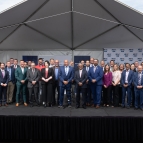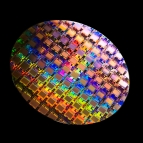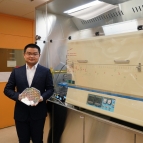Self-Healing Materials for Vibration Damping

Vibrations limit the life span and functionality of systems, for example, causing stress fractures in aircraft wings and blurring images from a camera. Materials used today specifically in microsystems are unable to endure repeated stresses, limiting their overall performance.
Our scientists in collaboration with the MIT Department of Materials Science and Engineering are developing new materials that could be tailored at the molecular level to dissipate vibrations in microsystems. The materials are chemically inspired by nature, taking cues from the threads that keep mussels attached to rocks amidst the pounding of ocean waves. These structures automatically reassemble, or self-heal, when broken. While bio-inspired hydrogels that can self-heal have previously been developed, these materials are limited in application because they require water to self-heal. The scientists are aiming to replicate this self-healing ability in composite materials made of metal ions and nanoparticles bonded with polymer gel, whose chemical nature allows it to repair itself in response to damage.
These materials could be tuned to vibrate at specific frequencies to counteract the vibrations incurred on a system. By measuring the frequency at which the system, or part of a system, vibrates, a composite material could be customized with different metal ions, such as iron and cobalt, that will absorb the range of vibrational frequencies. These materials could then be engineered into the system, for instance as mounts for stabling micro-optics. The end goal of the program is to create a suite of materials that can survive repeated external stresses to enable a next generation of enhanced microsystems.



